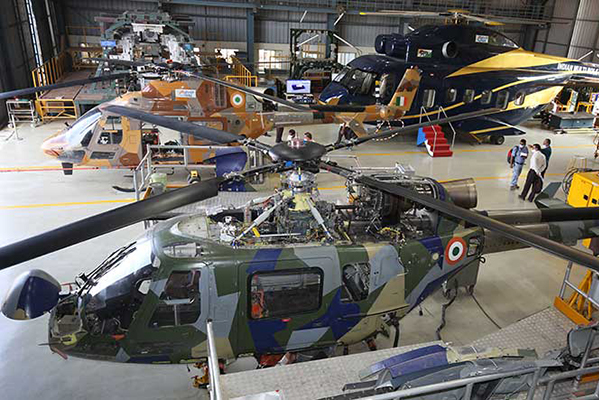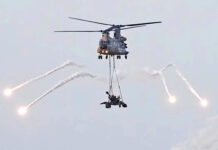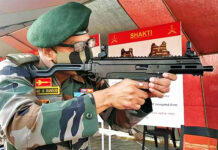Trade-off Between Cost and Availability at the Equipment Level Established
Due to increasing instability in the geopolitical situation in the world, every country must increase its military strength, and military aircraft plays an important role in this. This comes at a huge cost and puts pressure on the military budget. It is very important to ensure maintenance of the existing aircraft to ensure full availability during emergencies. This inspired a faculty member of IIM Kashipur to carry on the related research on aircraft maintenance along with his PhD student who is a seasoned expert in the field. Their research aims at the development of a generic framework for estimating trade-offs between cost and availability at the equipment level due to corrective maintenance in aircraft maintenance, repair, and overhaul (MRO).


A military aircraft is a rotary-wing or fixed-wing aircraft operated by a legal or insurrectionary armed service of any type. An aircraft is made of several small replaceable equipment, which are known as line replaceable units (LRUs). A LRU is an independently functioning modular equipment that takes very little time to replace in an aircraft. The use of avionics in LRUs has increased with more acceptance of the “fly by wire” technique in post-1990 aircraft manufacturing. These avionics are the electronic systems used in aircraft communications, navigation displays, management of multiple systems, and controlling other functions. In aircraft, repair of failed LRU or avionics equipment is a cost and time-consuming event. In aircraft MRO, aircraft on the ground (AOG) is a condition when aircraft cannot stay in service due to a problem in any LRUs/equipment/system. The replacement of these LRUs is often unavailable with the Air Force and original equipment manufacturer (OEM). This severe stock out of LRUs may also severely impact the defense forces’ mission capability, resulting in further country security implications. This necessitates efforts to reduce the MRO turn-around time (TAT) and availability of LRUs at minimum cost. In reducing the TAT, the key challenges faced in military aircraft MRO are complex technology, unpredictable fault occurrences, fluctuation of demand, variation in supplier response time, and resource sharing among different shops.
ALSO READ: French aerospace major Safran to set up engine MRO facility
While doing MRO, the repair activities can be mainly in the form of preventive maintenance (PM) and corrective maintenance (CM). PM in aircraft includes regular inspections and testing of LRUs to identify probable failures beforehand to prevent a breakdown during mission deployment. The “run to failure” principle governs CM, where fault correction happens upon occurrence. In military aircraft, the full PM schedule of aircraft is a costly affair. CM actions negatively affect availability and constitute a significant portion of an aircraft’s non-operational life cycle. In military aircraft, the effectiveness of every piece of equipment is crucial in achieving the required performance during a mission. To achieve this performance, factors like reliability, maintainability, and logistics support of LRUs play a very important role. The objective of the MRO shop here is to determine the optimal strategy that can ensure the desired system performance, like the earliest availability of equipment to the customer at a minimum cost. An integrated MRO management process can lead to a comprehensive strategy for CM while leveraging existing resources in terms of equipment availability. Nowadays, a significant portion of this military budget is the aircraft MRO activity. In recent times, the cost of MRO has become a key factor for awarding defense contracts to OEMs with a liquidity damage clause. Liquidated damages are the amount, the parties agree at the time of contract formation to receive as compensation upon a specific breach. Therefore, the research addresses the key research questions concerning the CM activities in aircraft MRO. This relates to the constraints in the MRO shop which causes a delay in CM, the effect of the input distribution of LRUs on the delay in CM, and the effect of change in input distribution on liquidity damage and availability trade-off.
The researchers used a dynamic simulation to represent the trade-off between availability and cost, after the study of more than five hundred corrective maintenance cases for impact analysis. The developed model has been tested for the fix, Gaussian, and triangular distribution in an aircraft MRO shop to calculate the liquidity damage cost due to delivery overrun of equipment. Simulation results of multiple queues indicate that input distribution plays a significant role in the trade-off between cost and availability of LRUs in aircraft MRO. Academically, this is the first study focusing on the impact of multiple queuing distributions on cost and equipment availability in military aircraft MRO. The proposed framework may help in more precise projection in MRO scheduling, benchmarking, and decision-making while signing the commercial contract between the original equipment manufacturer and the customer. In the current study, authors have interacted with many industry experts to develop a basic understanding of the problem. The model developed was an exact representation of an aircraft MRO shop. The framework developed in the study is generic and useful for decision-making at the strategic decision-making level at the time of contract signing. The model will also help in process improvements at the shop floor level by better scheduling strategies. The framework and model developed in the research use actual data from the industry for its authenticity. It is more critical for OEMs to prioritize resource management on repair stations in place of diagnosis and test stations to safeguard the commercial interest.


















